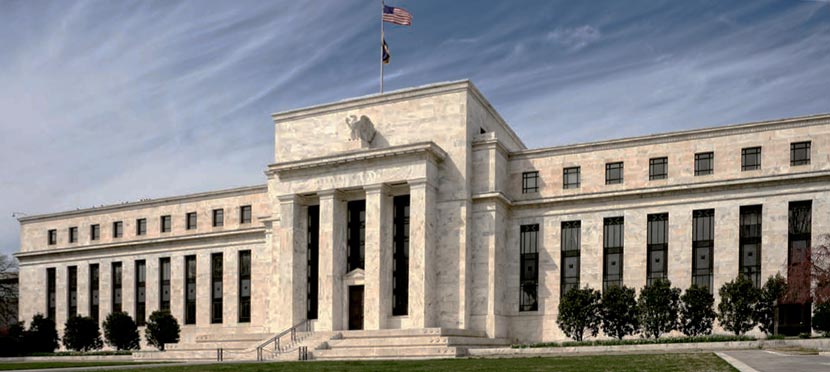In a release late last week, the FED said that as part of its annual examination of the capital planning practices of the nation’s largest banks, the Federal Reserve Board did not object to the capital plans of 34 firms but objected to the capital plan from DB USA Corporation due to qualitative concerns.
Due in part to recent changes to the tax law that negatively affected capital levels, two firms will maintain their capital distributions at the levels they paid in recent years. Separately, one firm will be required to take certain steps regarding the management and analysis of its counterparty exposures under stress.
The Comprehensive Capital Analysis and Review, or CCAR, in its eighth year, evaluates the capital planning processes and capital adequacy of the largest U.S.-based bank holding companies, including the firms’ planned capital actions, such as dividend payments and share buybacks. Strong capital levels act as a cushion to absorb losses and help ensure that banking organizations have the ability to lend to households and businesses even in times of stress.
“Even with one-time challenges posed by changes to the tax law, the CCAR results demonstrate that the largest banks have strong capital levels, and after making their approved capital distributions, would retain their ability to lend even in a severe recession,” said Vice Chairman Randal K. Quarles.
When evaluating a firm’s capital plan, the Board considers both quantitative and qualitative factors. Quantitative factors include a firm’s projected capital ratios under a hypothetical scenario of severe economic and financial market stress. Qualitative factors include the strength of the firm’s capital planning process, which incorporates risk management, internal controls, and governance practices that support the process.
This year, 18 of the largest and most complex banks were subject to both the quantitative and qualitative assessments. The 17 other firms in CCAR were subject only to the quantitative assessment. The Board may object to a capital plan based on quantitative or qualitative concerns.
The Board objected to the capital plan from DB USA Corporation due to qualitative concerns. Those concerns include material weaknesses in the firm’s data capabilities and controls supporting its capital planning process, as well as weaknesses in its approaches and assumptions used to forecast revenues and losses under stress.
The Board issued a conditional non-objection to the capital plans of both Goldman Sachs and Morgan Stanley and both firms will maintain their capital distributions at the levels they paid in recent years, which will allow them to build capital over the next year. Each firm’s capital ratios, under the capital plans they originally submitted and with the one-time capital reduction from the tax law changes, fell below required levels when subjected to the hypothetical scenario. This one-time reduction does not reflect a firm’s performance under stress and firms can expect higher post-tax earnings going forward.
The Board also issued a conditional non-objection for the capital plan from State Street Corporation. The stress test revealed counterparty exposures that produced large losses under the hypothetical scenario, which assumes the default of a firm’s largest counterparty under stress. The firm will be required to take certain steps regarding the management and analysis of its counterparty exposures under stress.
The Federal Reserve did not object to the capital plans of Ally Financial, Inc.; American Express Company; BB&T Corporation; BBVA Compass Bancshares, Inc.; BMO Financial Corp.; BNP Paribas USA; Bank of America Corporation; The Bank of New York Mellon Corporation; Barclays US LLC.; Capital One Financial Corporation; Citigroup, Inc.; Citizens Financial Group; Credit Suisse Holdings (USA); Discover Financial Services; Fifth Third Bancorp; HSBC North America Holdings, Inc.; Huntington Bancshares, Inc.; JP Morgan Chase & Co.; Keycorp; M&T Bank Corporation; MUFG Americas Holdings Corporation; Northern Trust Corp.; The PNC Financial Services Group, Inc.; RBC USA Holdco Corporation; Regions Financial Corporation; Santander Holdings USA, Inc.; SunTrust Banks, Inc.; TD Group US Holdings LLC; U.S. Bancorp; UBS Americas Holdings LLC; and Wells Fargo & Company.
U.S. firms have substantially increased their capital since the first round of stress tests led by the Federal Reserve in 2009. The common equity capital ratio–which compares high-quality capital to risk-weighted assets–of the 35 bank holding companies in the 2018 CCAR has more than doubled from 5.2 percent in the first quarter of 2009 to 12.3 percent in the fourth quarter of 2017. This reflects an increase of more than $800 billion in common equity capital to more than $1.2 trillion during the same period.

